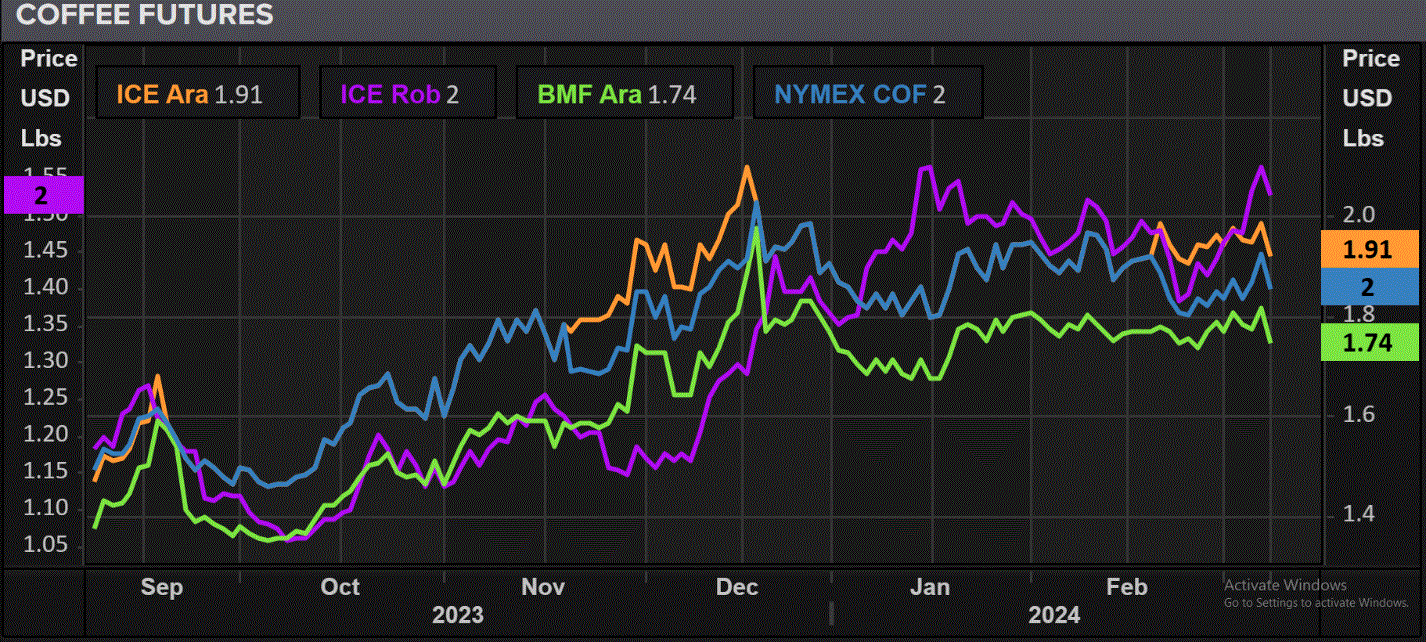
ISO Raises Global Sugar Deficit Forecast for 2023/24
The International Sugar Organization (ISO) has recently raised its forecast for the global sugar deficit in the current crop year (2023/24 – starting from October 2023 and ending in September 2024).
According to the forecast, the global sugar market will face a deficit of 689,000 tonnes, double the deficit predicted in the organization’s recent report in November 2023, which was 335,000 tonnes.
This forecast contradicts the results of a Reuters survey. Specifically, Reuters’ survey conducted in late February 2024 showed that analysts and sugar traders predicted an average surplus of 500,000 tonnes for the global sugar market in the 2023/24 crop year.
According to the ISO, global production in 2023/24 will reach 179.7 million tonnes, a decrease from the previous forecast of 179.9 million tonnes, and consumption will be 180.4 million tonnes, a slight increase from the previous estimate of 180.2 million tonnes.
The ISO has raised its forecast for Brazil’s production in 2023/24 to 44.52 million tonnes from the previous estimate of 43.07 million tonnes, but lowered its outlook for Thailand’s production to 8.24 million tonnes from the previous estimate of 9.48 million tonnes.
According to the ISO’s report: “This is the second consecutive time we have raised our forecast for Brazil’s production. That is the main reason why we maintain the view that sugar prices will remain sideways in the near future.”
The ISO estimates that the global sugar surplus in 2022/23 was 308,000 tonnes.
Coffee Prices Predicted to Decline by Year-End
Arabica and Robusta coffee futures prices on the Intercontinental Exchange (ICE) are expected to end 2024 lower than current levels and lower than the end of last year. That is the average result of a Reuters survey of 10 world-renowned traders and analysts.
According to the survey, Arabica coffee is expected to end 2024 at 165 US cents/lb, down 12% from the closing price on March 8 and down 14% from the end of last year.
Robusta coffee is expected to end 2024 at $2,600/tonne, down 21% from the closing price on March 8 and down 14% from the end of last year.
Robusta coffee futures reached their highest level since 2008 in January, but have since declined.
Reuters survey participants believe that coffee prices will come under pressure in the coming months due to improved supply prospects, with the average global coffee supply and demand balance forecast for the 2024/25 crop year estimated to have a surplus of 3 million bags (1 bag = 60 kilograms), compared to only a surplus of 600,000 bags in the 2023/24 crop year.
They predict that production in Brazil, the world’s leading coffee grower, will increase to 69.5 million bags in 2024/25 from 66.1 million bags in 2023/24, and expect production in Vietnam, the second-largest coffee producer and leading Robusta coffee grower, to increase by 1.5 million bags to 29.5 million bags in 2024/25.
Analysts say the main factor in the market in the coming months will be the shift in climate patterns from the current El Nino to La Nina, which could occur as early as the second half of this year.
El Nino is generally seen as more negative for coffee production as it tends to lead to drier weather for Robusta coffee plantations in Asia and warmer-than-average temperatures in Brazil. The shift to La Nina could bring more favorable weather conditions for coffee trees.
In 2023, Vietnam’s coffee exports reached a record high of USD 4.24 billion, up 4.6% compared to 2022 and the highest level ever, according to data from the General Department of Customs. This is also the second consecutive year that the value of Vietnam’s coffee exports has exceeded USD 4 billion. Notably, the export value increased sharply while the volume decreased by 8.7% in 2023 compared to the previous year, reaching 1.62 million tonnes (equivalent to 27.05 million bags).
Coffee exports in January 2024 continued to show an upward trend, reaching 238,266 tonnes worth over USD 726.59 million, up 67.2% in volume and up 134% in value compared to the same period last year.

Coffee prices are rising sharply.
Global Cocoa Deficit Expected to Worsen in 2023/24
The International Cocoa Organization (ICCO) recently forecasted that the global cocoa deficit will worsen in the 2023/24 crop year due to aging trees and disease pests contributing to reduced production in the world’s two largest cocoa-producing countries – Ivory Coast and Ghana.
In the latest quarterly update, the ICCO predicted that the cocoa deficit for the current crop year (October 2023-September 2024) would be 374,000 tonnes.
This forecast is in line with the results of a Reuters poll of analysts and traders, which had an average deficit forecast of 375,000 tonnes.
The ICCO forecasts that global production will decrease by 10.9% to 4.45 million tonnes, and grindings will decrease by 4.8% to 4.78 million tonnes.
The ICCO estimated that the cocoa deficit for the 2022/23 crop year was 74,000 tonnes.
The ICCO’s report states: “There is a common perception that supply tightening is occurring, particularly in West Africa (where about 70% of global supply is sourced) due to structural issues,” referring to issues such as aging trees, pests, and climate challenges.
The ICCO forecasts that global cocoa stocks at the end of the 2023/24 crop year will decrease to 1.395 million tonnes, equivalent to 29.2% of cocoa grindings this year, the lowest level in 45 years.
Ivory Coast is expected to produce 1.80 million tonnes in 2023/24, down from 2.24 million tonnes of the previous season, while Ghana’s production is expected to decrease to 580,000 tonnes from 654,000 tonnes.
Poor harvests in Ivory Coast and Ghana have helped push up cocoa futures prices on the global market to record highs.
The ICCO said it is possible that consumers will see higher chocolate prices or smaller sizes of chocolate products.
Source: Reuters





































